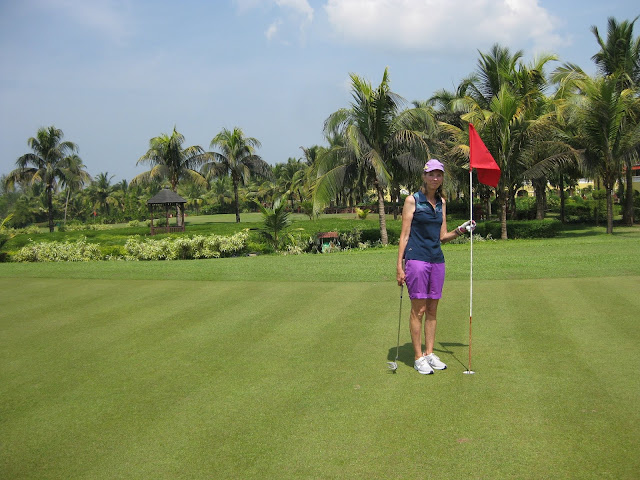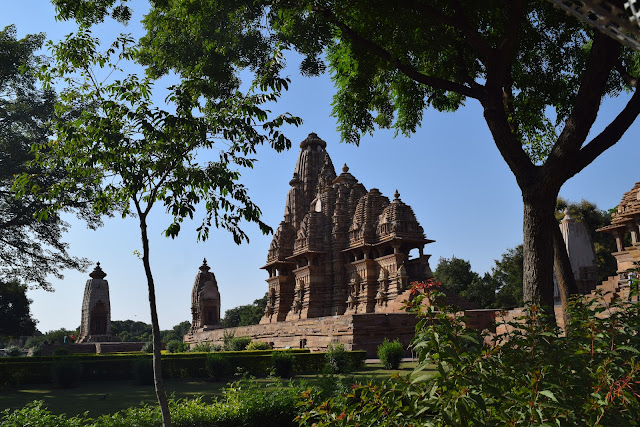Probably the least said about
the train trip from Lucknow to Delhi the better.
We were on a mid-afternoon
train that delivered us the 700 kilometres to Delhi in seven hours. There were
earlier trains but they travelled at a much slower speed and would have had us
arrive at about the same time. The train had about 2,000 passengers and just
like a plane, they had trolley dolly’s (blokes though) working the length of
the train. Everyone first received a tea bag and a small thermos of hot water
and a litre bottle of drinking water. Then out came a tray with a carrot
sandwich, a samosa, Himalayan popcorn and some other strange nibbles. This all
sustained us for the daylight section of the trip.
Travelling at about 110
kilometres/hour, we got a good look at the countryside and at times along the
route we would stop at junctions for a minute or so. Most of the stations we
just whizzed straight through and we just got quick glimpses of the bewildered
dogs and people lying and standing on the platforms.
Everyone was treated to an
evening meal of (you guessed it) a curry dish and naan bread. A small tub of
ice-cream was the highlight of the tucker!
For those poor buggers who
needed to visit the toilet, they will have a memory indelibly engraved in their
brain. For the lucky ones like us who avoided it, we feel permanently scarred
by the look on the faces of those who did exit it.
We were lucky to have a midday
flight to Goa on Wednesday so that gave us plenty of time to enjoy breakfast
before heading to the airport. Some of the group needed to be up at 5:00 am to start their travels home.
We had
an hour drive from Goa airport to our beach side accommodation at Varca on the
mid-west coast of Goa state. That gave us a couple of hours of sunlight to
check out the local area and enjoy a cold one in Cosmo’s beach shack that was
in its first day of trading of the tourist season. It was still receiving final
touches having been reconstructed once again following the monsoon season.
Fresh sugar cane drink anyone? No added sugar!
Goa is
a strange place. You drive through narrow village roads for miles without
seeing water through the thick scrub. It has a population of about 1.8 million
and relies heavily on tourism. Russians and Brits are attracted here and most
signs and menus are in Russian as well as English.
Thursday
morning we were picked up for a tour of Old Goa, about an hour north of Varca.
Portuguese India is certainly different to the northern states of India. There
is a real Christian influence here and while we did visit two wonderful Hindu
temples, it seemed strange to also be visiting 400 year old Basilicas and
Cathedrals built by Franciscans and Jesuits. Our guide for the morning was
Stanley Fernandez (named because his father thought so highly of the Stanley
tool brand). His knowledge of the local history was extensive to say the least.
Our guide Stanley showing us around Old Goa.
What would a pulpit like this bring in the trading Post?
Or am I dreaming?
Our
free afternoon had us walking along the beach before taking the plunge into the
Arabian Sea. The water was every bit as warm as the Pacific in Hawaii and the
sunbeams were severe, even at only 34 degrees.
Guess which way the monsoon winds come from?
What would a beach be without cows?
Friday
was golf day! After breakfast we ventured about an hour south of Varca by taxi
where we hired clubs and played at the Lalit golf & spa resort. What a
resort it is. The golf course is in great condition and the scenery, especially
on the beach side of the course was spectacular. Like everywhere in India, whether
it be on the beach, in a market or on a golf course, cows have right of way. We
enjoyed frothies and late lunch at the resort before venturing back to Varca to
watch another sunset on the beach.
We’re in safe hands on the beach
Ruling please. Can you get relief from pups on course?
What about cows?
So
today is Saturday and we fully intend to vegie out on the beach. We have a
1:00pm pickup tomorrow for a flight back to Delhi and a night at a hotel.
Monday we head home and will be back in time for the running of the Cup.
Hope
you’ve enjoyed this bog.
Cheers.



















































